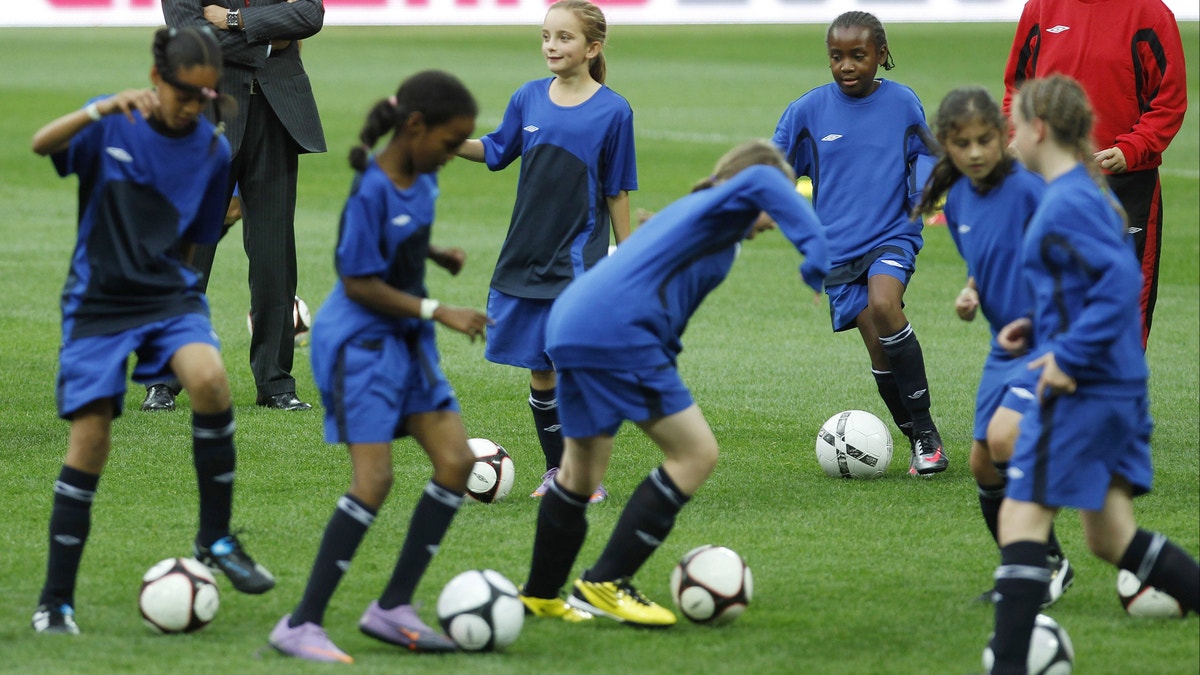
(REUTERS/Andrew Winning)
Outlawing "heading the ball" during soccer games may reduce the rate of concussions, but eliminating player-on-player contact would help more, suggests a new study.
The findings challenge recent calls to ban "heading," which is when players hit soccer balls with their heads, the study's lead author told Reuters Health.
"Intuitively it sounds great," said Dawn Comstock of Colorado School of Public Health at the University of Colorado Anschutz Medical Campus in Aurora. "It even has the word 'head' in it."
Comstock and her colleagues report in JAMA Pediatrics that players are more likely to get concussions during heading than other soccer plays, but it's not the cause of the injuries.
"When you look more deeply in the data, it’s not the act of athletes hitting the balls with their heads at all," Comstock said. "Rather, it’s athlete-to-athlete contact that occurs during heading."
The Safer Soccer campaign, promoted by the nonprofit Boston-based Sports Legacy Institute, urges that heading be delayed until high school or age 14. The campaign is backed by professional soccer players.
To see if the data support a ban on heading, the researchers studied a representative sample of U.S. high school soccer players. Overall, between 2005 and 2014, 627 concussions occurred during 1,393,753 soccer practices or competitions.
Player-on-player contact was the most common cause of concussions overall, they found.
Heading was the most common soccer-related play associated with concussions, compared to other plays like passing or defending the ball. Heading accounted for about 31 percent of concussions among boys and about a quarter of concussions among girls.
But about 78 percent and about 62 percent of heading-relate concussions among boys and girls, respectively, were due to contact with another player.
While some young players do get concussions when they head the ball, that number is very small compared to those who are injured by another player while heading the ball, Comstock said.
The current rules of soccer in many leagues reduce player-to-player contact, she said.
"If we just enforce those kind of rules to eliminate or at least reduce athlete-to-athlete impacts, that would do more to reduce concussions than just banning heading alone," Comstock said.
Dr. Robert Cantu, co-founder and medical director of the Sports Legacy Institute, told Reuters Health that the new study confirms previous research on the rate of concussion during heading.
"What (Comstock) does point out - and she’s looking at the high school level not the youth level - is that rough play also needs to be addressed," said Cantu, who was not involved with the new study. His organization supports that, he said.
Heading is still the activity with the highest incidence, he pointed out. Also, under age 14 is when the maximum development of the brain occurs.
"By banning headers before (age) 14 we can take 30 percent of concussions down to zero overnight," said Christopher Nowinski, the Sports Legacy Institute's co-founder and executive director.
Dr. Jeffrey Bazarian of the University of Rochester Medical Center in New York also cautioned that it would be difficult to know how many concussions could be prevented by enforcing current rules.
"When two players go up for a head ball, they’re both following the rules," said Bazarian, who wasn't involved with the new research.
He stressed that concussions are treatable, and the real question is how repeated hits to players' heads impact them later on.
The authors also note out that most injuries reported in soccer are to lower parts of the body, not the head.
